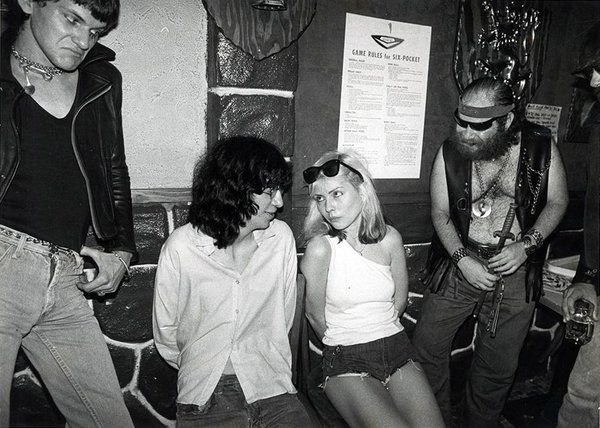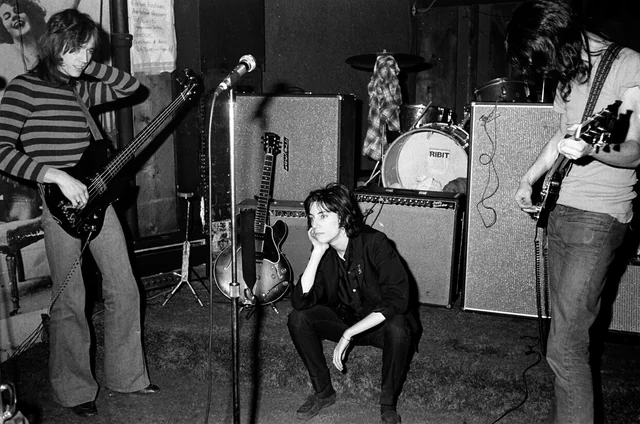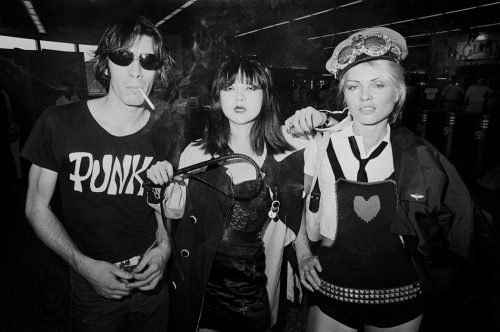In the dimly lit, graffiti-covered walls of a rundown bar in New York City’s Bowery neighborhood, the raw, unfiltered sound of a new musical revolution was taking shape. “We’re The Ramones, and this is ‘Blitzkrieg Bop,'” announced Joey Ramone on a humid night in 1974, marking the birth of a cultural phenomenon that would redefine the music landscape. CBGB, originally intended as a haven for Country, BlueGrass, and Blues, had become the unlikely epicenter of the punk rock movement.
CBGB was more than just a venue; it was a breeding ground for innovation and rebellion. The club’s unassuming stage became the launchpad for some of the most influential punk bands, including The Ramones, Television, and the Patti Smith Group. By offering a space where unconventional sound and anti-establishment ethos could thrive, CBGB played a crucial role in the development and spread of punk rock in America.
The Birth of CBGB

In 1973, Hilly Kristal, a seasoned music club manager with a passion for live performance, founded CBGB & OMFUG (Country, BlueGrass, Blues, and Other Music For Uplifting Gormandizers) in the Bowery, a gritty and often overlooked neighborhood of New York City. Kristal envisioned a place where emerging musicians could perform without the constraints typically imposed by other venues. His goal was to create a sanctuary for the genres he loved—Country, BlueGrass, and Blues—offering a platform for artists who found it hard to secure gigs elsewhere.
Original Concept
The original concept behind CBGB was rooted in Kristal’s appreciation for traditional American music. He wanted to highlight Country, BlueGrass, and Blues, genres that he felt were underrepresented in New York’s music scene. The club’s full name, CBGB & OMFUG, reflected this eclectic vision. However, as the club began to attract a more diverse array of musicians, its identity began to shift. Rather than rigidly adhering to its initial blueprint, CBGB became a melting pot of musical experimentation and creativity, evolving organically as it embraced the burgeoning punk scene.
Location
Nestled at 315 Bowery, the club was situated in one of New York City’s most notoriously run-down areas. The Bowery was known for its flophouses, dive bars, and a gritty, urban atmosphere that seemed worlds away from the polished streets of Midtown. This raw environment, though initially off-putting to some, proved to be the perfect backdrop for the emerging punk ethos—a movement characterized by its rejection of the mainstream and its embrace of authenticity and rebellion.
Inside, CBGB was unassuming and almost Spartan, with its low ceilings, sticky floors, and walls plastered with band flyers and graffiti. The club’s layout featured a narrow, rectangular room with a small stage at the back. The bar was often crowded, filled with an eclectic mix of artists, musicians, and fans. This intimate setting fostered a sense of community and immediacy, where the barrier between performer and audience was almost non-existent.
Kristal’s open-minded approach to bookings and his willingness to take risks on unknown bands turned CBGB into a launchpad for a new wave of music. As word spread, more and more punk and alternative bands found their way to CBGB, transforming it from a niche venue into a legendary landmark in music history.
The Emergence of Punk

Punk rock emerged in the early 1970s as a countercultural response to the excesses of mainstream rock music and the socio-political climate of the time. Influenced by the raw energy of 1960s garage rock, the rebellious spirit of the 1950s rock ‘n’ roll, and the avant-garde ethos of bands like The Velvet Underground and The Stooges, punk rock sought to strip music down to its essentials. It was a reaction against the overproduced and often pretentious nature of popular rock, advocating instead for a DIY approach that emphasized simplicity, brevity, and raw power.
Punk’s roots can also be traced to the disillusionment and frustration felt by many young people in the 1970s. Economic stagnation, political corruption, and a general sense of societal decay fueled a desire for change and rebellion. This cultural backdrop provided fertile ground for the emergence of punk as both a musical genre and a broader cultural movement.
First Punk Bands at CBGB
CBGB quickly became the focal point for this burgeoning punk scene. The first punk bands to play at CBGB helped to define and popularize the genre.
- The Ramones: Often considered the pioneers of punk rock, The Ramones brought a fast, loud, and stripped-down sound that was a stark contrast to the prevailing rock music of the time. Their debut performance at CBGB in August 1974 set the tone for the club’s future.
- Television: With their intricate guitar work and avant-garde sensibilities, Television was one of the first bands to play at CBGB. Their residency at the club helped to establish it as a hub for experimental and unconventional music.
- Patti Smith Group: Patti Smith’s fusion of poetry and rock ‘n’ roll brought a literary and intellectual edge to the punk scene. Her performances at CBGB were electrifying and deeply influential.
- Blondie: Fronted by Debbie Harry, Blondie brought a pop sensibility to punk, blending punk’s rawness with catchy melodies and a glamorous image. Their shows at CBGB were pivotal in broadening the appeal of punk rock.
Signature Sound and Style
The early punk scene at CBGB was characterized by its distinctive musical and stylistic traits.
- Musical Characteristics: The music was fast, loud, and aggressive, often featuring short, two-to-three-minute songs with simple, repetitive chord structures. Lyrics were direct and unpolished, frequently addressing themes of alienation, rebellion, and anti-establishment sentiment. The instrumentation was typically basic, with an emphasis on electric guitar, bass, and drums, eschewing elaborate solos and production effects in favor of raw power and immediacy.
- Stylistic Characteristics: Punk fashion was equally rebellious, characterized by a DIY aesthetic. Leather jackets, ripped jeans, and band T-shirts became the uniform of choice. Many punks sported unconventional hairstyles, such as brightly colored hair, mohawks, and shaved heads, further distinguishing themselves from mainstream culture. This visual style was a form of social and political commentary, a rejection of the polished and commercialized image promoted by the music industry.
The atmosphere at CBGB was electric and often chaotic, with a palpable sense of energy and unpredictability. The small, intimate setting fostered a close connection between bands and their audience, creating an environment where artistic expression and community thrived. This unique combination of musical innovation, cultural rebellion, and raw authenticity solidified CBGB’s role as the cradle of punk rock in America.
CBGB’s Legacy

CBGB’s influence on punk rock extended far beyond the confines of its graffiti-covered walls. The raw, energetic performances and the DIY ethos that characterized the club catalyzed a musical revolution. As bands like The Ramones, Television, Patti Smith Group, and Blondie gained popularity, they took the spirit of CBGB with them, spreading it across the United States and eventually the world.
Punk scenes began to emerge in cities such as Los Angeles, where bands like X and Black Flag drew inspiration from the New York pioneers. In the UK, punk rock exploded with the rise of bands like The Sex Pistols and The Clash, who were heavily influenced by the music coming out of CBGB. The cross-pollination between American and British punk scenes created a global movement that challenged musical norms and societal expectations.
Over the decades, punk continued to evolve, giving rise to various subgenres such as hardcore punk, post-punk, and pop-punk. Each iteration retained elements of the raw energy and rebellious spirit that defined the early days at CBGB. The club’s impact can be seen in the ongoing popularity of punk music, the establishment of new punk scenes around the world, and the continuous emergence of bands that cite CBGB-era punk as a key influence.
CBGB’s Closing
Despite its storied history and cultural significance, CBGB was not immune to the economic pressures and gentrification that swept through New York City. In the early 2000s, the club faced mounting financial difficulties, primarily due to a significant rent increase imposed by its landlord, the Bowery Residents’ Committee (BRC). Despite efforts by Hilly Kristal and a passionate community of supporters to save the club, a lengthy legal battle ensued, culminating in the decision to close its doors in 2006.
The final show at CBGB took place on October 15, 2006, with Patti Smith performing an emotional farewell set. The closing of CBGB marked the end of an era, but it also underscored the lasting impact the club had on music and culture. The iconic venue’s demise was a poignant reminder of the challenges faced by independent music venues in an ever-changing urban landscape.
Continued Influence
Though CBGB no longer physically exists, its legacy endures in numerous ways. The club’s influence on music, fashion, and culture is unmistakable. Musically, the DIY ethic and raw sound pioneered at CBGB continue to inspire new generations of artists. Bands and musicians across genres cite CBGB and its alumni as significant influences on their work, keeping the spirit of the club alive through their music.
Fashion also carries the imprint of CBGB’s punk scene. The punk style, characterized by leather jackets, band tees, ripped jeans, and unconventional hairstyles, has permeated mainstream fashion. High-end designers and streetwear brands alike draw inspiration from the rebellious aesthetics that were born in the cramped, sweaty confines of CBGB.
Culturally, CBGB’s impact is evident in the numerous documentaries, books, and films that chronicle the club’s history and its role in the punk movement. The venue itself has become a symbol of artistic freedom and countercultural resistance. Exhibits and installations dedicated to CBGB and its legacy can be found in museums and galleries, preserving its story for future generations.
Even though the original building now houses a high-end fashion store, the spirit of CBGB lives on in the countless bands that continue to perform with the same raw energy and unbridled passion that once defined the club. CBGB’s enduring legacy serves as a testament to the power of music to inspire change, challenge the status quo, and build community. The club may be gone, but its influence remains woven into the very fabric of punk rock and beyond.
